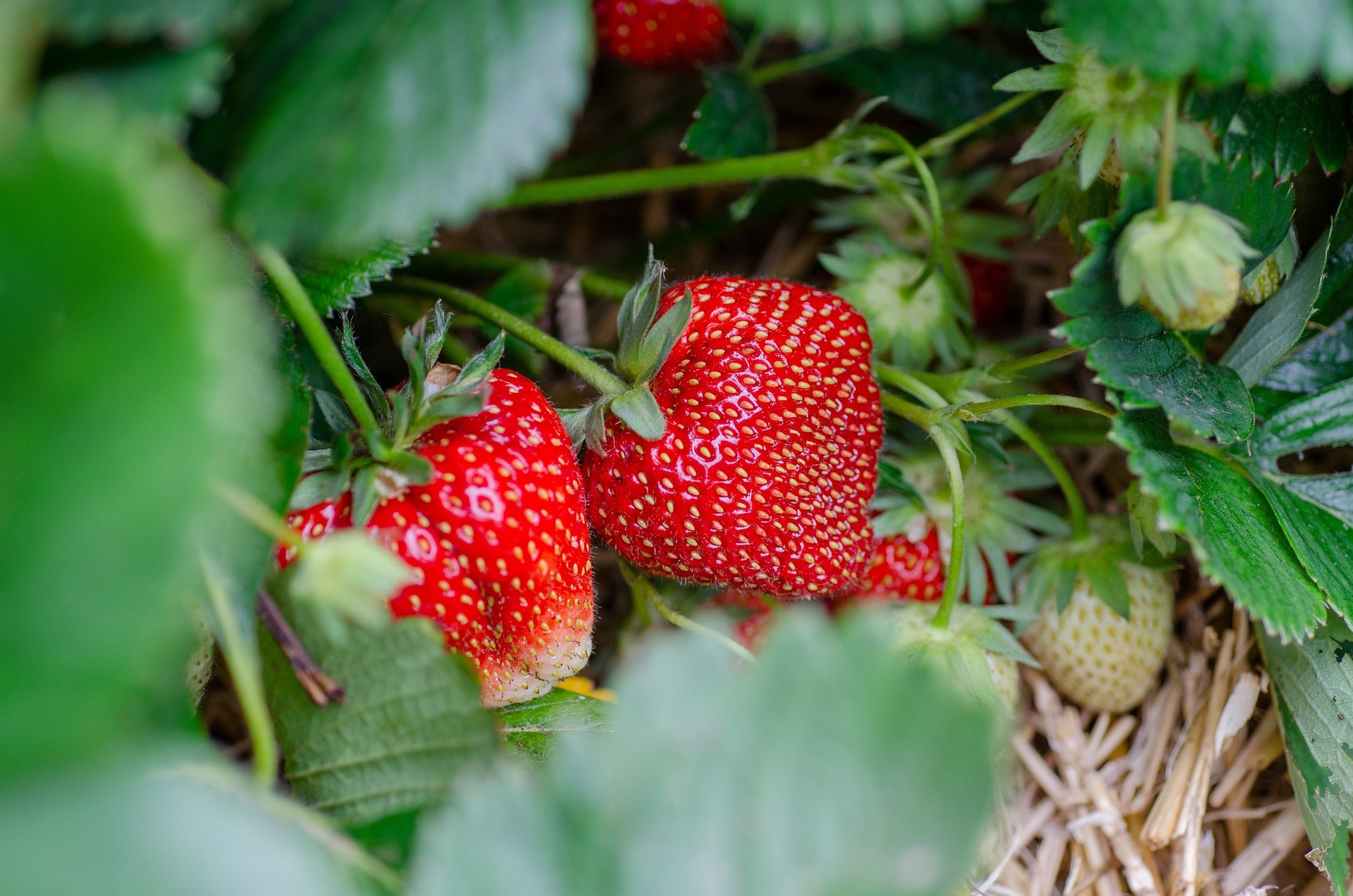The Three Main Types of Strawberries
There are three different types of strawberries that all offer special considerations depending on their purpose in your garden. Understanding the differences between these types is going to be the key in making all of your strawberry dreams come true.
June-Bearing Strawberries
Some of the most popular varieties of strawberries out there hold the title of June-bearing. They are certainly an impressive bunch and are easy to come by.
Typically, they produce strawberries over a period of two to three weeks. Most of the time this period is in or around the month of June - hence the name. This is really great for folks who are interested in making a large batch of jam or pie filling all at once.
Ever-Bearing Strawberries
Ever-bearing varieties (unlike June-bearing) are not honestly true to their name. They don’t actually bear fruit throughout the entire season but produce usually two major harvests per growing season. Both of these harvests are typically smaller than a whopping June-bearing yield. That being said, you also don’t then have to handle who knows how many buckets of strawberries all at once!
Ever-bearing strawberries put out fewer runners than June-bearing strawberries which may make them great for gardens of a smaller size or lower effort.
Day Neutral
Day-neutral strawberries are a special bunch. They typically produce a decently sized yield the first year they are planted, whereas other types can take a year or more to produce. Their fruit does tend to be smaller than other types but they’ll produce a moderate yield about three times a season.

June-Bearing Strawberry Varietals
This June-bearing strawberry is an excellent performer, doing well over a wide range of growing conditions. This variety is recommended for commercial growers and home gardeners alike because of its sweet and uniform fruits. These large berries have amazing quality and flavor.
This June-bearing heirloom is thought by many to be the best strawberry for jam and freezing. You’ll be rewarded with a nice crop of flavorful, high quality strawberries year after year if you manage your bed and don’t allow it to become too cramped. It’s a great beginner variety as well.

Ever-Bearing Strawberry Varietals
The Ozark Beauty was developed in Arkansas and is well suited for cooler regions of the North and higher elevations in the South. Ozark Beauty strawberries are considered to be one of the best ever-bearing varieties. They are vigorous and extremely prolific producers. They produce fairly large berries that are deep red and honey sweet.
This ever-bearing variety was developed at the University of California and produces a high yield of firm, large, flavorful berries. These well-shaped berries have a superb flavor and bear fruit over a long season. They’re one of the most productive and disease resistant varieties out there! Their shallow roots make them ideal for containers.

Day Neutral Strawberry Varietals
Albion Strawberries
This day neutral variety is very disease resistant and produces fairly large, firm fruit. Its heat tolerance has been show stopping and makes them great for gardeners with very hot summers. Compared to other Day Neutral varieties, this one does send out a decent number of runners and will spread well if allowed to.
Elsanta Strawberries
This vigorous strawberry has deep green foliage and large flowers and berries. The berries are so easy to harvest which makes them great for new or young gardeners. Their flavor is truly rewarding as well. A dutch variety that has risen in popularity has a long shelf life and firmness that lasts.
As you can see, there are many amazing types of strawberries to choose from and grow successfully. And, if we’re being honest, you really can't go wrong. Try a couple or try them all, have a taste testing contest, choose YOUR favorite. And then let us know what you think.

|
Article Written by: Hannah Gibbons |
|
About the Author: Hannah Gibbons, an employee at Sow True Seed since 2020, has nearly a decade of experience in the agricultural industry. Their passion for environmental education and regenerative agriculture has been the cornerstone of their work, aimed at making gardening accessible to all. |



